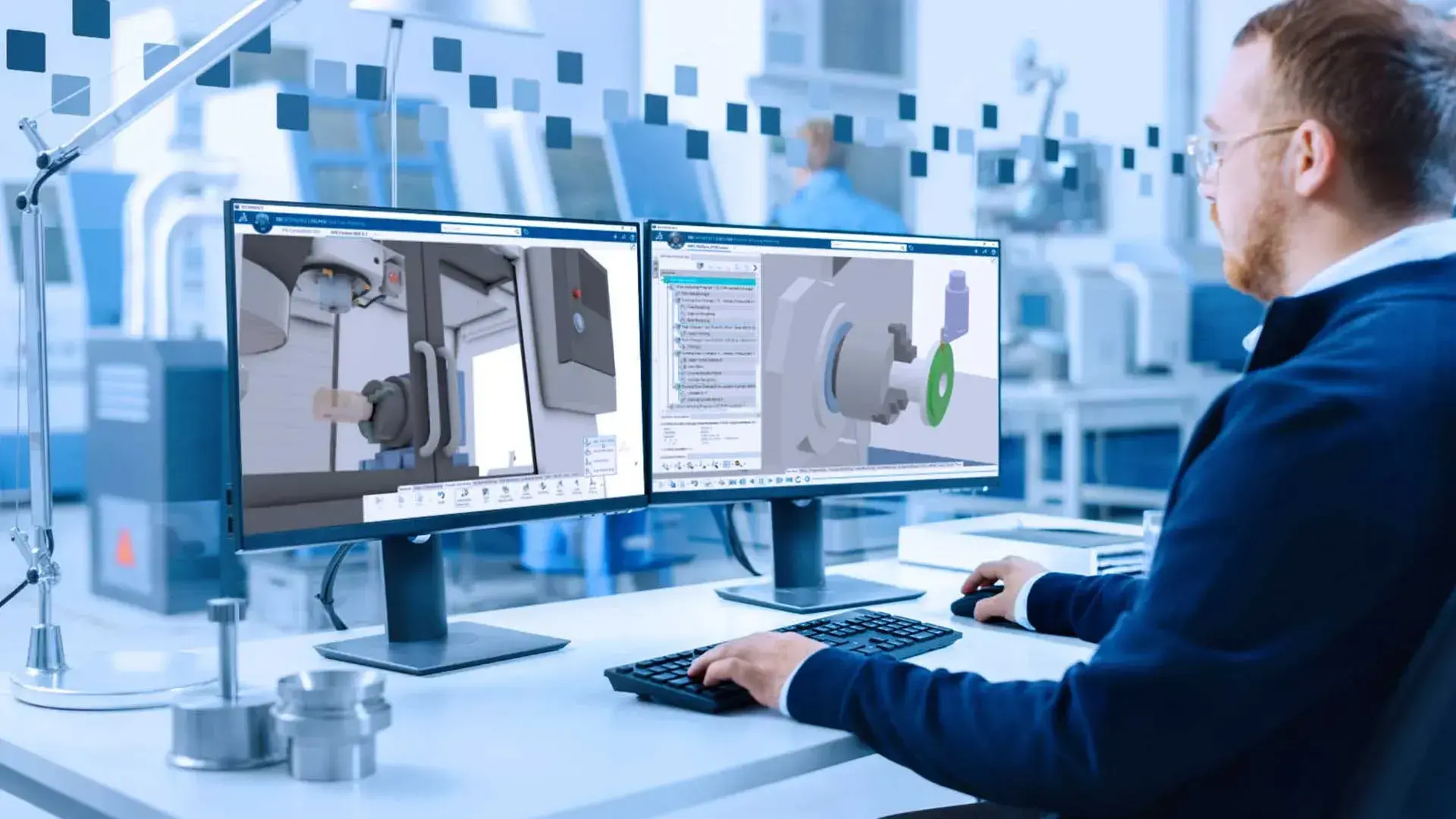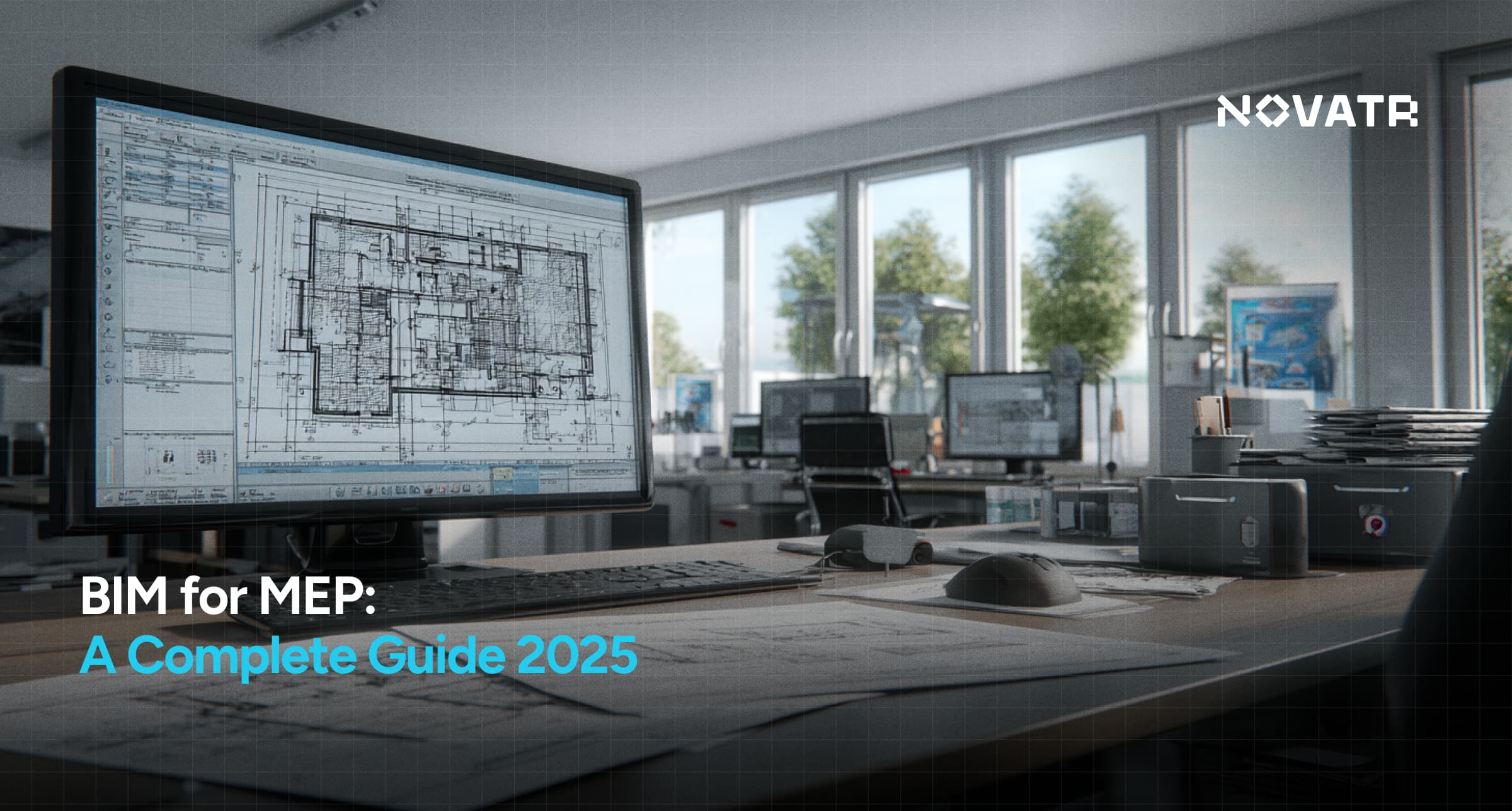.png)
We are living in an age where construction projects are becoming more complex, fast-paced, and tech-driven than ever before. For MEP consultants, this means adapting to smarter tools and processes to stay ahead in the game. The buzz around BIM MEP services is not just industry hype, it is a genuine leap forward in the world of building design and engineering. But let us rewind a bit.
What is MEP in construction? It stands for Mechanical, Electrical, and Plumbing, three critical disciplines that make modern buildings liveable and functional. MEP consulting engineers are the brains behind designing and integrating these systems. However, as MEP infrastructure grows more intricate, traditional 2D methods simply cannot keep up. That is where BIM software steps in like a breath of fresh air.
So, if you are wondering whether it is time to trade your old methods for Revit MEP software and embrace MEP BIM modelling, the short answer is: absolutely. Let us explore why.
Why Do MEP Consultants Struggle with Traditional Design Methods?
Let us be honest, traditional 2D CAD drawings are like using a flip phone in the age of smartphones. They might do the job, but they are clunky, outdated, and prone to miscommunication. One of the biggest pain points for MEP consultants using conventional methods is coordination, or rather, the lack of it.
Without a central model, it is hard to visualise how different MEP systems interact with one another, or how they integrate with architectural and structural components. This often leads to on-site clashes, design rework, and increased costs. In large-scale MEP projects, this kind of inefficiency can delay timelines and even damage client relationships.
Moreover, traditional workflows lack the precision and flexibility needed in modern MEP design. Paper-based MEP drawings or isolated files make it difficult to perform accurate quantity take-offs, detect spatial conflicts, or adjust changes in real time.
Also Read: Top 10 Trends in MEP Design
What Problems Does BIM Solve in MEP Projects?

When managing complex MEP projects, the challenges can be endless—poor coordination, constant revisions, on-site clashes, and never-ending delays. Traditional methods just do not cut it anymore, especially when the expectations for speed and accuracy are sky-high. Thankfully, BIM MEP services offer a more innovative way forward..
Here are some of the key problems BIM helps solve:
-
Design Clashes: Identifies conflicts between MEP systems and structural or architectural elements before construction starts.
-
Lack of Coordination: Streamlines collaboration across teams, including architects and engineers involved in MEP in architecture.
-
Outdated Documentation: Ensures all MEP drawings are automatically updated with changes made in the central model.
-
Time-Consuming Rework: Reduces costly revisions during MEP works in construction by spotting issues early in the design phase.
-
Inaccurate Estimations: Improves material and cost forecasting for MEP infrastructure, helping teams stay on budget.
Can BIM Help MEP Consultants Deliver Projects Faster and More Efficiently?
For MEP consultants, time is money, and traditional workflows often waste a lot of both. Constant coordination errors, manual updates to MEP drawings, and last-minute site changes can slow down even the most experienced teams. BIM MEP services and tools like Revit MEP software make the entire design and construction process faster, more accurate, and incredibly well-coordinated. BIM allows MEP consulting engineers to automate repetitive tasks, streamline decision-making, and deliver high-quality MEP projects with fewer delays and far less stress.
Here’s how BIM boosts project speed and efficiency:
-
Automatic Updates: Changes made in the model instantly reflect across all views and sheets in MEP design, saving hours of manual editing.
-
Clash Detection: Identifies problems between MEP systems and other building elements before construction, preventing delays.
-
Faster Approvals: Enhances coordination with architects and clients by providing clear 3D visuals of MEP in architecture layouts.
-
Better Resource Planning: Allows accurate scheduling and quantity estimation for MEP infrastructure, reducing waste and downtime.
-
Improved On-site Execution: Provides real-time model access to MEP technicians, helping them install systems precisely.
-
Standardised Workflows: Streamlines documentation and workflows across multiple MEP works in construction, ensuring consistency.
-
Enhanced Team Collaboration: Keeps everyone, from engineers to contractors, on the same page with centralised BIM software.
Also Read: BIM for MEP: A Complete Guide 2025
What Are the Business Benefits of Adopting BIM for MEP Firms?
Here is the exciting part: BIM is not just suitable for projects; it is fantastic for business. MEP consultants who adopt BIM early position themselves as leaders in a competitive marketplace.
First, let us talk about MEP jobs. As more companies embrace digital workflows, BIM proficiency becomes a highly sought-after skill. Offering BIM MEP services gives your firm a serious edge when bidding for high-value projects.
Second, clients today expect more innovative solutions. Developers want efficient, sustainable, and future-ready buildings, whether it is a smart hospital, a high-rise office, or a data centre. BIM helps deliver on those expectations by supporting better energy modelling, lifecycle analysis, and facility management integration.
And let us not forget ROI. Investing in BIM may seem like a big shift at first, but the long-term savings, in time, materials, and labour, are well worth it. Reduced rework, better planning, and faster execution all contribute to healthier profit margins.
Is BIM Adoption Difficult? How Can Consultants Overcome the Learning Curve?
The shift from traditional tools to platforms like Revit MEP might seem overwhelming for many MEP consultants. But the truth is, with the proper guidance and patience, the learning curve is absolutely manageable. Plus, the long-term rewards, improved project delivery, fewer errors, band etter teamwork, make it more than worth the effort.
Here’s how consultants can ease into BIM adoption:
-
Start Small: Begin with pilot MEP projects to understand workflows before scaling BIM across the firm.
-
Invest in Training: Enrol your team in certified Revit MEP software or BIM software training programmes tailored for MEP design professionals.
-
Leverage Online Resources: Tap into webinars, tutorials, and forums on BIM MEP services and best practices.
-
Use Templates and Libraries: Speed up learning with ready-to-use content specific to MEP in architecture and MEP systems.
-
Mentor Within the Team: Encourage experienced users to support new learners during early MEP works in construction stages.
-
Adopt Step-by-Step: Gradually introduce MEP BIM modelling into projects instead of forcing a sudden full-scale shift.
-
Stay Updated: BIM tools evolve rapidly, so keep your team informed about the latest features in MEP software.
Also Read: 10 Essential Skills Every MEP Engineer Needs to Master
Conclusion
The construction industry is evolving rapidly, and MEP consultants must evolve. Traditional design methods simply cannot keep pace with the demands of modern buildings and tight project timelines. BIM technology offers a smarter, faster, and more collaborative way to plan, design, and execute MEP projects.
BIM is a no-brainer for forward-thinking MEP consulting engineers, from reducing clashes to speeding up approvals, improving design accuracy, and enhancing client satisfaction. Whether you are managing MEP in architecture, coordinating complex MEP systems, or leading large-scale infrastructure developments, BIM equips you with the tools to excel.
So, if you have been hesitating about making the switch, now is the perfect time. Embrace BIM software, upskill your team, and confidently step into the future of the MEP industry. After all, innovation starts with action.
For this purpose, we recommend you explore the BIM Professional Course for MEP Engineers by Novatr. This programme can equip you with a complete skill set to launch your career with more confidence.
Visit our Resources Page to learn the latest in civil and MEP engineering.
Was this content helpful to you



.jpeg)



